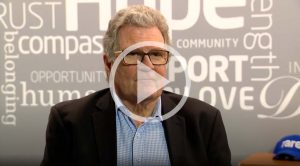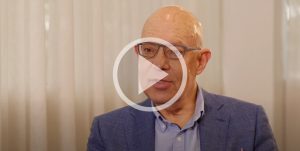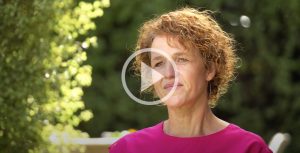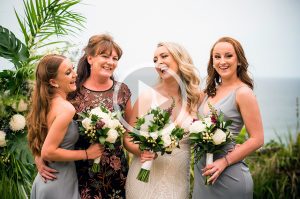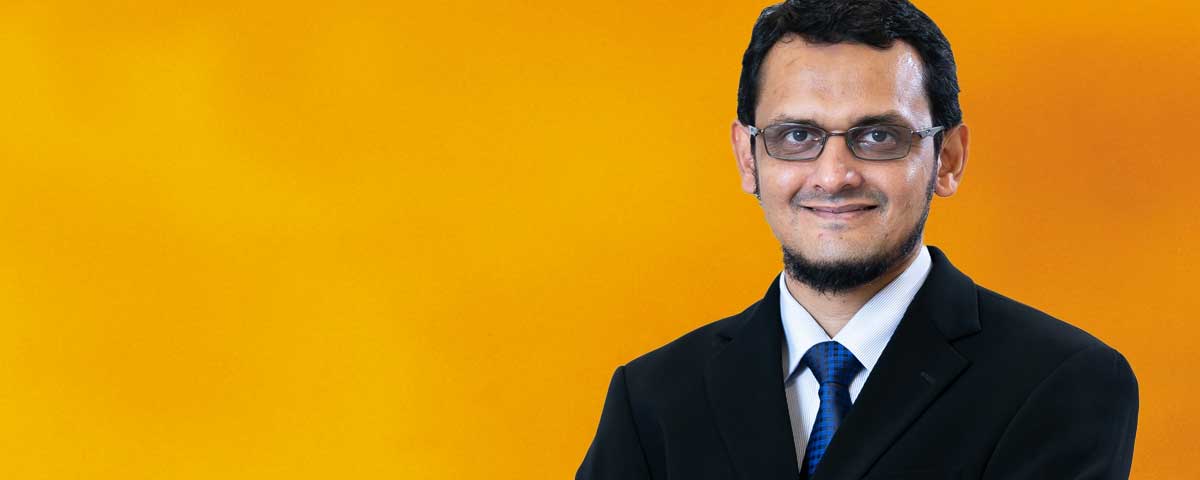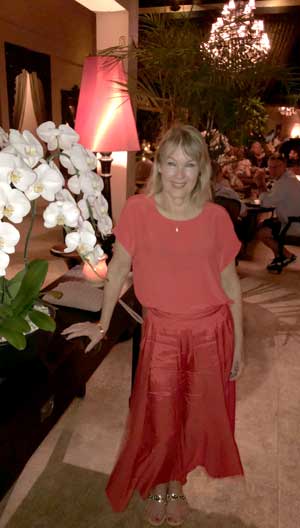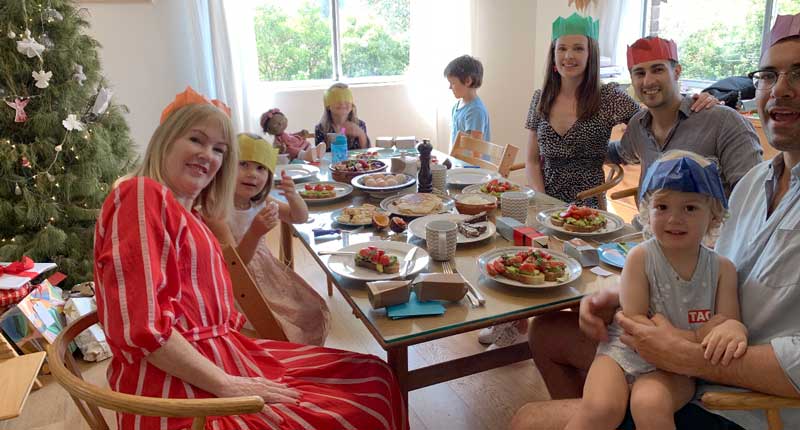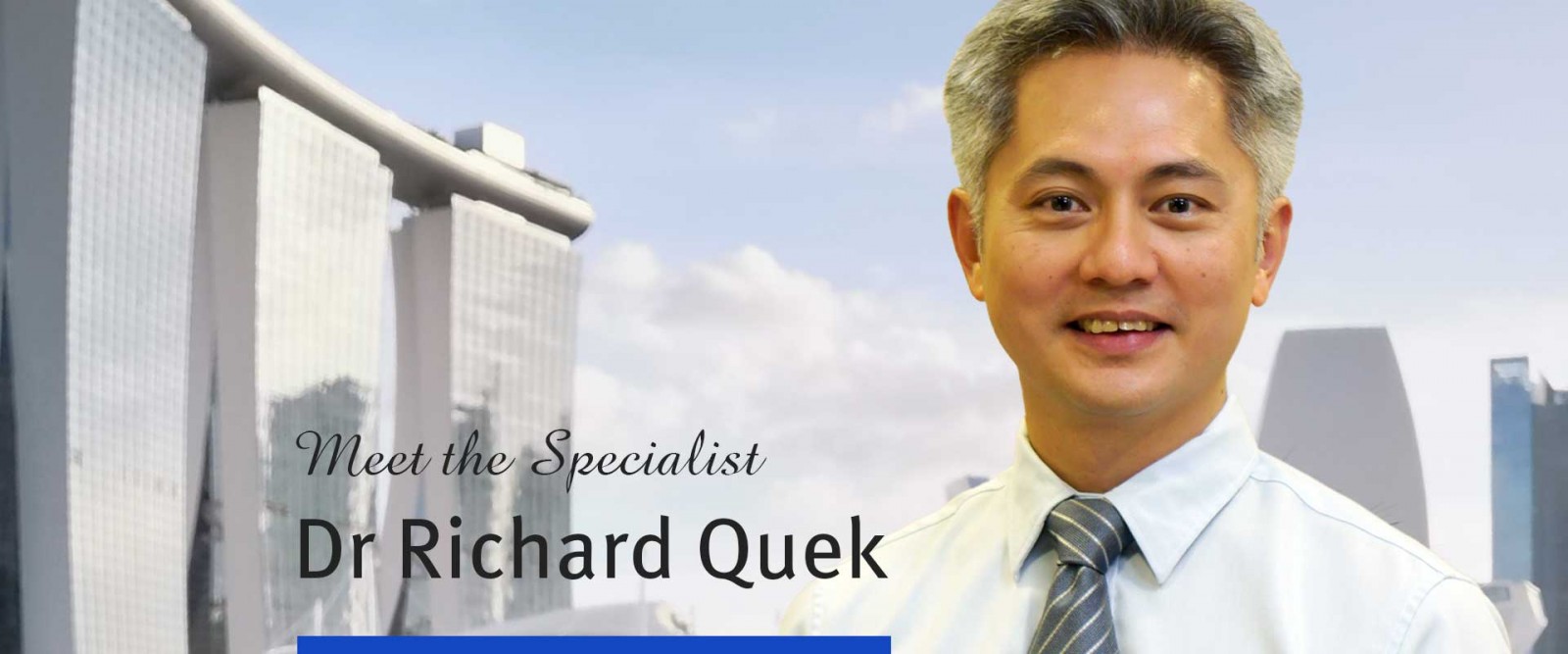Medical Oncologist Professor John Zalcberg explains gastrointestinal stromal tumours – GIST
Living with GIST – Sarah McGoram’s Story
Meet the Specialist: Breast Cancer Oncologist Dr Khoo Kei Siong
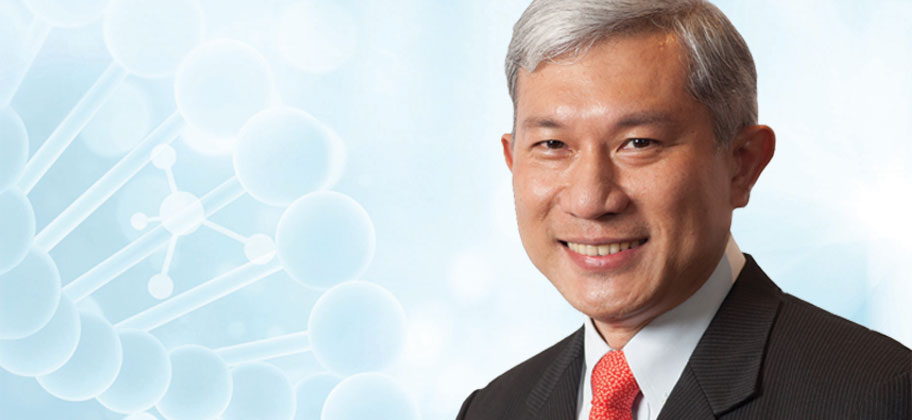
Meet the Specialist – Breast Cancer Oncologist Dr Khoo Kei Siong, who is a Deputy Medical Director and Senior Consultant at Singapore’s Parkway Cancer Centre
Singapore breast cancer oncologist Dr Khoo Kei Siong says “changes in dietary habits, life style and reproductive patterns” are the most likely reasons breast cancer diagnoses are rising steadily in the region – with a more than three-fold increase since the late 1960s. But there is good news, with the prognosis for these women “improving significantly” and modern immunotherapy agents showing “strong promise” – particularly when it comes to treating triple-negative breast cancers. And while all patients make an impact, it was a young woman he met 20 years ago as a junior consultant that has reinforced why emerging therapies can make all the difference – particularly when it comes to HER2+ breast cancer and targeted therapy. To mark Breast Cancer Awareness Month, Dr Khoo shares these insights.
Tell us about a patient who has inspired your career and life’s work.
“I recall a young lady with breast cancer whom I met when I was a junior consultant some 20 years ago. She had a stage II breast cancer for which she had surgery and a course of standard adjuvant chemotherapy. Unfortunately, her cancer recurred two years later, with spread to the lungs and bones. This lady was given various chemotherapy treatments with responses that lasted for a few months. Progression in the lungs and liver ensued. Just as we were running out of options, we heard news about a new drug that works in breast cancers that over-expressed HER2 receptors. We were intrigued, and tested this lady’s tumour for HER2 and it was strongly positive (IHC3+). We quickly made arrangements for this new drug – trastuzumab – to be made available on a compassionate basis and she was administered this new therapy in combination with docetaxel.
We were delighted when her disease responded marvellously well, achieving a complete response after four cycles of treatment. Her cardiac function marginally deteriorated after four months, but recovered when trastuzumab was withheld for two months. She continued to receive trastuzumab as a maintenance for another nine months before it was discontinued due to poor cardiac function.
What amazed me, was that she remained free of disease progression continuously for the next eight years without any further treatment. She continued to work in the bank and led an active and fulfilling life. I had not seen a patient recover like that before, and it was a clear demonstration to me of what can be achieved when a major driver of cancer growth is effectively inhibited. That had spurred my interest in targeted therapy, especially in the field of HER2 positive breast cancer. My team then worked very hard to get ourselves equipped so that we could be involved in clinical trials.
The patient eventually passed on due to what was believed to be a sudden cardiac event. It was shocking for the team looking after her at that time as her cancer was in remission. That was a painful reminder that new and effective cancer treatments may have short term and long term effects, that we must continue learning about.
How common is breast cancer in Singapore?
Breast cancer is the most common cancer and the leading cause of cancer death among Singapore women. In the five-year period from 2014 to 2018, about 2200 women were diagnosed each year, accounting for 30% of all cancers in women. The age standardised incidence rate of breast cancer has risen 3.5 times between 1968-1972 and 2014-2018, from 20.1 per 100,000 population to 70.7 per 100,000 population.
Thankfully however, survival rates in breast cancer have also improved steadily over the past three decades, with the five-year age standardised relative survival rising from 50% in 1973-1977, to 80% in 2014-2018. About 10% of breast cancer are stage 4 at the time of first diagnosis.
Why is the incidence of breast cancer rising?
There is no known cause of breast cancer that is unique to Singapore. It is believed that changes in dietary habits, life style and reproductive pattern are the most likely reasons for the rising trend of breast cancer incidence.
A breast cancer diagnosis impacts all areas of a woman’s life and affects her quality of life in different ways over the course of the illness. Whether the woman is an elderly person or a mid-career executive or a young mother, the initial diagnosis is often met with disbelief or shock. The following treatment may take anywhere from a few months to a year or longer, disrupting lives and routines. Although the acute side effects of chemotherapy are generally well managed today, many women experience anxiety, poor sleep, joint stiffness, hot flashes and weight gain – even after the treatment is over.
And what are the chances of recurrence for these women?
The likelihood of recurrence following the initial diagnosis depends on the type and stage of the cancer, as well as the treatment received. In general, the higher the stage, the more likely a recurrence. Some breast cancer sub-types – like HER2-positive and triple negative cancers (where there is an absence of hormone receptors and HER2 receptors) – pose a higher risk of recurrence than hormone receptor positive breast cancers.
This fear of recurrence is common among all cancer patients, and certainly in breast cancer patients as well. It does not help that many breast cancer survivors are young career women with school-aged children, and even elderly parents.
Patients go through an emotional roller coaster, from diagnosis to surgery, to chemotherapy and even when they transition out of treatment to follow up appointments. Some cope well, and are able to maintain a positive mind set as they gradually put their lives back together. Others continue to be weighed down by worries of recurrence, and jump at every little symptom fearing the worse.
I have found talking about statistics bring little comfort. Rather, I try to help them explore the many pursuits they can have going forward and encourage them to live life more meaningfully. For some, it is about re-prioritising a busy schedule to connect with themselves or their family and friends. For others, it is learning a new hobby, or volunteering in a community project. Joining a cancer support group, or a referral to a counsellor may also be helpful.
In course of the journey, quite a few have found new purposes in life and are less pre-occupied with the thoughts of recurrence over time.
Besides medical treatments, some life style changes can also modify the risk of cancer recurrence. Breast cancer survivors are encouraged to exercise regularly (at least three times week), to maintain a healthy weight (keeping BMI within the ideal range), to practice meditation, and cut down on alcohol consumption.
If a woman is diagnosed with breast cancer today in Singapore, why should she have hope?
There are many reasons a woman can be hopeful if diagnosed today with breast cancer. Firstly, her cancer is likely to be in the early stage (70% of new patients are diagnosed at either stage 1 or 2) and these women have a more favourable outcome. Secondly, because of early stage disease and smaller tumours, breast conservation instead of mastectomy is possible for most patients. Even in those whose tumours are too large to permit breast conservation, some may be candidates for neoadjuvant chemotherapy where the tumour can be down-sized sufficiently so a mastectomy can be avoided. Thirdly, with the advancement of systemic therapy of breast cancer, the prognosis of breast cancer, across all stages, has improved significantly. Singapore is world standard when it comes to breast cancer management, and our treatments and services are on par with the world’s major cancer centres.
Is immunotherapy playing a role in the management of breast cancer and what is your expectation moving forward?
Although immunotherapy agents in the form of PD1 and PD-L1 check point inhibitors have made a slow start in breast cancer, recent publications has shown that they do have a role in triple negative breast cancer (TNBC). In advanced TNBC, the addition of anti-PD1 to chemotherapy increases the opportunity for progression free survival. The combination of chemotherapy and anti-PD1 inhibitors also increases the chances that the breast tumour will shrink or even disappear (what we call a pathological complete response) in localised TNBC. This is a significant finding, because this could mean a better long term survival for more patients.
Moving forward, I see immunotherapy playing an increasing role in the treatment of breast cancer, in TNBC for sure, but also in other breast cancer subtypes. New research and emerging therapies always offer hope.”
Dr Khoo Kei Siong is a doctor of Parkway Cancer Centre (PCC), Singapore. To learn more about PCC, click here.
*October 2021
Oncotype DX®– Maxine Gladwin’s Experience
“I was 47 years old when I was diagnosed with breast cancer in November 2014.
After a mastectomy, my oncologist recommended chemotherapy treatment, along with hormone therapy.
When my family raised concerns about chemotherapy, my oncologist told me about the Oncotype DX test. The cost of this test was well out of my reach, as I am a single parent with three teenage daughters.
My mother was with me at the consultation and she insisted on paying for it, because we were hoping I could avoid chemotherapy if it was safe.
It was such a relief when I got the results. I had a 3% chance of recurrence and I would not be any better off having chemo.
My Dad cried with relief when he heard. Because I am the sole breadwinner, I was terrified of losing my job and I really thought this could happen if I was missing work for treatment.
I had contacted Centrelink prior to receiving my results and was advised that my entitlements would not even cover our rent, so our family could have been homeless.
Two of my girls were doing HSC at the time and moving them away from their school, family and friends would have been hugely disruptive.
Without Mum at my appointment, I would have just gone with chemotherapy.
It’s terrible knowing that many women are going through unnecessary treatment.
I consider myself lucky. I am happy to report that five years after my diagnosis, I have had no cancer recurrence. My oldest daughter is married and is a manager for a travel agency, my two younger girls are nearly finished university degrees – one is studying to be a nurse and the other a social worker.
I don’t know if any of this would have happened if I had just proceeded through treatment. Having an Oncotype test and getting the results I did, really changed my life.”
“I was 47 years old when I was diagnosed with breast cancer in November 2014.
After a mastectomy, my oncologist recommended chemotherapy treatment, along with hormone therapy.
When my family raised concerns about chemotherapy, my oncologist told me about the Oncotype DX test. The cost of this test was well out of my reach, as I am a single parent with three teenage daughters.
My mother was with me at the consultation and she insisted on paying for it, because we were hoping I could avoid chemotherapy if it was safe.
It was such a relief when I got the results. I had a 3% chance of recurrence and I would not be any better off having chemo.
My Dad cried with relief when he heard. Because I am the sole breadwinner, I was terrified of losing my job and I really thought this could happen if I was missing work for treatment.
I had contacted Centrelink prior to receiving my results and was advised that my entitlements would not even cover our rent, so our family could have been homeless.
Two of my girls were doing HSC at the time and moving them away from their school, family and friends would have been hugely disruptive.
Without Mum at my appointment, I would have just gone with chemotherapy.
It’s terrible knowing that many women are going through unnecessary treatment.
I consider myself lucky. I am happy to report that five years after my diagnosis, I have had no cancer recurrence. My oldest daughter is married and is a manager for a travel agency, my two younger girls are nearly finished university degrees – one is studying to be a nurse and the other a social worker.
I don’t know if any of this would have happened if I had just proceeded through treatment. Having an Oncotype test and getting the results I did, really changed my life.”
Meet the Specialist: Dr Aminudin Rahman Bin Mohd Mydin
“Too often, patients are seeking information early on from social media and from the internet and they may be being provided with misinformation about unproven therapies. If they wait too long to seek medical care, then their cancer might not be curable.”
Malaysian sarcoma specialist Dr Aminudin Rahman Bin Mohd Mydin, Consultant Clinical Oncologist from KPJ Damansara Specialist Hospital, believes novel immunotherapy agents may one day change outcomes for difficult to treat sarcomas, with “promising responses” recorded in some of his own patients. While there is no phase 3 evidence yet supporting the use of immunotherapy in these cancers, patients can have hope that ongoing research efforts will continue to make a difference, as will the emergence of targeted agents to enable more durable disease control. As Specialised Therapeutics Asia prepares to reintroduce a global sarcoma therapy to the region, Dr Aminudin outlined his vision.
What is your reaction to the reintroduction of a global sarcoma therapy in South East Asia?
This is an exciting new development and will provide a new treatment option for many of our sarcoma patients. Essentially it means we have another option for these patients who are affected by these rare tumours. Sarcomas represent about 1% of adult cancers in Malaysia and in the region, but unfortunately, most patients present at advanced stage, when their disease has metastasised. This is a significant problem. Results are poor with current therapies, so any additional options are very welcome.
What is the incidence of sarcoma in South East Asia and what are the median survival outcomes?
Data in Malaysia suggests there are just over 200 cases of sarcoma per year in this country alone (Malaysian National Cancer Registry Report 2012-2016). About one-quarter of these would be liposarcoma or leiomyosarcoma, which are another sarcoma subset.
Almost half – around 40% – of patients who present with sarcoma in Malaysia are already at Stage 4 disease, with about 20% presenting at stage 3.
When they are stage 4, they are incurable, and the median survival is about 14 – 20 months. That is why there is this need for new therapies. With standard induction therapies, the response in these patients is not that great – patients would typically not receive a very durable, long term response. So, what we need is a maintenance therapy that can be introduced after induction therapy. This is typically the treatment scenario we would see with other advanced cancers, like lung, breast and ovarian cancers
What are the early symptoms of sarcoma and are there any known causes?
Early symptoms of sarcoma might be when a patient develops a painless mass or a lump, usually on the upper or lower limbs, although they can arise anywhere in the body. A lump in the abdomen may cause back pain, abdominal pain and so forth. Some of the possible causes can be previous radiation exposure or radiotherapy treatment. Some patients have had this kind of therapy many years earlier and can later develop a sarcoma at the site. In other cases, there may be a genetic abnormality that can predispose someone to sarcoma.
But generally, these cancers are rare and a cause for the vast majority of sarcomas is unknown.
What is your sarcoma vision for 2030?
It is my hope that by 2030, sarcomas are diagnosed at earlier stage when they are curable and I think to do that here in Malaysia, we will need a cultural shift.
Too often, patients are seeking information early on from social media and from the internet and they may be being provided with misinformation about unproven therapies. If they wait too long to seek medical care, then their cancer might not be curable.
There is certainly hope for patients and the signs are good. It is a long journey, but we are learning more all the time about genetics and molecular biology, which is helping us develop more targeted therapies. In other cancers like metastatic non-small cell lung cancer for example, one in three patients are now alive at five years post-diagnosis with effective treatment. This was unheard of 10 or 20 years ago. We can also replicate that in sarcoma, but there is a lot of work to do, and we have not reached that level yet. Sarcoma is a very heterogenous group of diseases, so we need to better understand the disease at a molecular and genetic level and translate that understanding into new therapies.
When it comes to immunotherapy, there are also some promising signs, although there is no phase 3 data yet. Trials in small groups have shown this kind of treatment to be effective, although it is not an approved therapy platform yet in sarcoma. I have used it and have seen some response. I expect there will be a significant role for immunotherapy in the future.
As a clinician, what inspires you about working with sarcoma patients?
I was not born into a family of doctors, but I was inspired by doctors treating our family growing up. I decided to do oncology after graduation – it is the contact with patients and their families that inspires me most. I have learned so much from many of them.
From a scientific perspective, oncology is an exciting field as there are always new developments. It is important that our fascination with the science doesn’t mean we forget there is a patient and a family in front of us and they are all impacted by the disease. Cancer impacts a whole family and a whole society.
Being an oncologist is challenging, time consuming and exhausting. But it is ultimately satisfying to treat and support the patients and their families through the journey.
*May 2021
Suzanne Lombardo – International Women’s Day
This International Women’s Day, we celebrate all women – particularly those who are facing a breast cancer diagnosis as well as those striving to make a difference.
STA oncology liaison Suzanne Lombardo understands both perspectives. In this piece, she explains how her own experience with the disease has changed the way she now approaches her work.
“I was diagnosed with breast cancer just over two years ago, when I was 61. I am pretty fit and healthy, and I had made a decision to have breast reduction surgery. It was something I just wanted to do for myself and it has saved my life.
Three days after my operation I returned to the hospital to get my drains removed. My appointment was to see the nurse however when I arrived, I was told that my surgeon wanted to see me. As I sat down he said, ‘I have good and bad news’. This was very unexpected.
He was holding a pathology report. Not all plastic surgeons have the breast tissue examined by a pathologist but thankfully, mine did. The surgeon told me that while he had seen nothing during the operation at all, the pathology had revealed two small malignant tumours in my left breast.
He showed me the report which he had written ‘WOW” over as to be diagnosed like this is very unusual. I was stunned, as a mammogram only four weeks prior to surgery had showed nothing.
He immediately contacted one of the best Breast Oncology Surgeons in NSW and I was booked to see him at 7.30 the next morning. I expected to be told that they would monitor me, as basically I had already undergone surgery and the tumours were now excised with clear margins. Because of this expectation, and as I had kept my surgery private, I attended the appointment alone.
But I was then told I could still need a full double mastectomy, depending on the results of additional tests. Attending the appointment alone was a mistake, as I was so shocked I did not ask any questions.
I am a registered nurse, but I am the world’s biggest sook and some of the tests were quite confronting – with one of them, I had five needles inserted around the nipple and they injected a dye. The MRI scans were also really claustrophobic. After these tests I had lymph node biopsies.
It was determined that I had invasive lobular carcinoma, that was hormone positive and HER2-. It had not spread to my lymph nodes, thankfully.
I did not need chemotherapy, but I had six weeks of radiation treatment every day. I was due to start hormone therapy, but the overall benefit to me was going to be small, so in consultation with my medical oncologist I opted not to because of the possibility of experiencing an associated side effect. As a result, I must be very vigilant, and I have a regular MRI scan to keep an eye on things.
I coped very well with the radiation, although I crashed a bit about three weeks after finishing when I felt quite depressed.
I think it is because you are so busy when you are first diagnosed and all of a sudden, the ‘busyness’ stops, and you have time to think.
You do go through a grieving process after being diagnosed with breast cancer because it makes you face your mortality. Our breasts are strongly tied to our identity and you don’t give them up easily.
I am really thankful I had my breast reduction surgery. Without it, it would have been another year before my next mammogram and my doctor has said it would have been a totally different ball game.
Everybody associated with my diagnosis and treatment was so kind and supportive and open with the treatment pathway and benefits. Everyone’s pathway is different.
How has my own diagnosis influenced my work? I have always been passionate about being a voice for patients and ensuring that doctors know about new therapies that can make a difference.
One of the products we market is the Oncotype DX Breast Recurrence Score test. This test basically determines whether women with my type of cancer really need chemotherapy, or whether they can be safely treated with hormone therapy alone and avoid chemo.
Despite the best efforts of my employer, this test is still not reimbursed for Australian women. It costs $5000 to have this test, but it is reimbursed in most other parts of the world and is considered a standard of care.
I did not have this test at the time of my own diagnosis, because of the cost. Having it would have put my mind at ease about whether chemotherapy would make a difference to my long -term outcome, based on my own tumour biology. Breast cancer is not a ‘one size fits all’. I know of women who have had the same diagnosis as me and had a recurrence even though standard pathology might have indicated their own risk of recurrence was small.
The thought of recurrence does play on your mind. In all my dealings now with breast cancer oncologists, I always remember there is someone like me who will ultimately benefit if I can provide doctors with all relevant information about new therapies or technologies like Oncotype DX.
For the patient, being armed with all the right information is empowering. While I no longer work directly with patients, I am working for them. I really love my work and I am really grateful that my own health is good.”
*March 2021.
Introducing GIST and Sarcoma Specialist Dr Richard Quek
Dr Richard Quek says he has “the best job in the world”.
The Singapore based specialist in both GIST and sarcoma cancers believes it is a great privilege to care for patients during what is often a difficult cancer journey. “I enjoy the deep interactions I have with my patients and I am honored that they come to me and entrust me with their treatment, health and life,” he reflects.
As STA prepares to launch a new GIST therapy in South East Asia, Dr Quek generously shared his insights about the disease, which “most people have never heard of” before they are diagnosed. “Patients should ultimately know there are good treatments available for GIST, even for those patients whose disease has spread,” Dr Quek said. “The median survival rate is now more than five years and we have several lines of therapy for patients – so when one drug becomes ineffective, there are other options we can turn to. Patients who are diagnosed with GIST should have hope.”
Firstly, what is a GIST tumour and who do these tumours affect?
A gastrointestinal stromal tumor – or GIST – is the most common type of soft tissue tumor in the gastrointestinal (GI) tract. GIST is thought to arise from the Interstitial Cells of Cajal (ICC), which are the pacemaker cells of the GI tract.
Within the GI tract, the stomach is the most common primary location for a GIST, followed by the small bowels. GIST is also known to arise in the rectum.
GIST tends to affect adults, and typically, people are diagnosed in their sixties. There are however, some rare and specific forms of GIST that affect young children. A proportion of these are familiar in nature (i.e. heritable diseases).
1. What makes a GIST tumour different to other cancers?
GIST differs from other cancers in several aspects. GIST arises from the mesenchymal layer (connective tissue) of the human body while most other solid tumors arise in the epithelial layer (which lines the internal organs). As such, GIST is usually grouped under the umbrella of sarcoma instead of carcinoma.
GIST is molecularly heterogeneous. Most GISTs are driven by a mutation in either the KIT or PDGFRA gene, resulting in uncontrolled cell growth and metastasis (spread). While the minority of GIST are driven by a whole host of other genes, including NTRK, SDH, BRAF, NF1 etc. In some cases, we do not detect any driver mutations, we call them wild type GIST. But wild type GIST represents fewer than 10% of all GIST cases. Very rarely, GIST can affect young children and in the pediatric population, two cohorts exist. The first is familial GIST where there is a mutation in the blood line and the driver mutation is heritable. Some of these heritable genetic mutations include NF1 and KIT. Other cases of paediatric GISTs involve non-blood line mutations in SDH genes.
2. How common is the incidence of GIST in South East Asia and particularly, in Singapore?
GIST is a rare tumor and most patients have not heard of GIST prior to their own diagnosis. While we do not have exact incidence figures of GIST in Singapore and South East Asia, the incidence is believed to be similar to that in the west, which is approximately 15 cases per million population per year. However, autopsy data of incidentally detected GIST suggest the incidence of GIST to be higher than previously estimated.
3. What are the early symptoms of these tumours?
Symptoms are variable. Some patients may have an asymptomatic lesion that is found by chance, while others might present with massive lesions that are causing significant symptoms.
Symptoms also depend on where in the GI tract the tumor arises from and/or where it has spread to.
Common symptoms include:
- Abdominal bloating,
- Early satiety (feeling full easily after a small meal)
- Symptoms of anemia (low red blood cell count)
- Pain (in cases of tumor perforation)
- Rectal symptoms including feeling of incomplete bowel evacuation, blood in stools
- Urinary symptoms (when the rectal GIST irritates the urinary passage). Symptoms resemble those of an enlarged prostate and include urinary frequency, poor urinary flow, or a sense of incomplete urination
4. What are the next treatment paradigms for GIST?
Treatment of GIST involves a multi-disciplinary approach.
In cases of localised disease, where the disease has not yet spread, treatment will involve surgery with or without adjuvant (preventive) systemic treatment. If the tumor is easily resectable, surgery is advised. Patients are then risk stratified based on tumor size, site, mitosis per 50 high-power field (HPF) and presence/absence of tumor rupture. Patients with low and very low risk GIST are best observed post-surgery. Patients with high-risk GIST are advised to commence on extended adjuvant systemic therapy with imatinib. Currently, the duration of extended adjuvant imatinib is three years. For patients with intermediate risk GIST, the data is less clear and the clinical situation calls for shared decision making with the patient.
In cases of localised GIST where surgery is potentially morbid e.g. rectal GIST involving an abdomino-perineal resection and permanent colostomy, one can consider pre-operative systemic therapy to downsize the tumor prior to surgery.
In cases of metastatic GIST, treatment is palliative. Having said that, the field has made many significant advances since the early 2000s. We now have four lines of approved tyrosine kinase inhibitors (TKIs) for use in advanced GIST including imatinib, sunitinib, regorafenib and now, ripretinib.
Notably, the response to each type of drug also depends on the molecular profile. Some GIST harbour mutations which respond very well to certain drugs while others do not. Making things even more complicated, some specific subtypes of mutations within the same gene respond differently to the same drug. For example, in KIT-mutant GISTs, patients with KIT exon 11 respond well to imatinib while those with KIT exon? respond less well.
5. What is the five-year survival rate for GIST cancers?
With the development of effective drugs, median survival of patients with advanced/ metastatic GIST is now more than five years.
Most clinicians and pathologists are now familiar with diagnosis and initial management of GISTs. The potential blind spots could be molecular testing at initial diagnosis and potentially at time of resistance. Knowing this information may help tailor our choice of drug use.
6. What could the availability of new drugs mean for advanced GIST patients? Why is there a need for new therapies for these cancers? What would you like patients to know about the available treatments for GIST?
Effective treatment delays cancer worsening, prolongs period of disease control and potentially, survival.
There is clearly a need to discover new therapies because while we have many treatments available, advanced/ metastatic GIST is still considered incurable.
I would like patients to know there are many effective lines of treatment even in the advanced/ metastatic setting.
There is good treatment available for GIST and availability of specialised care for this rare cancer here in Singapore. Patients can be heartened by this.
7. On a personal level, what do you love about your job? What has inspired you to work with GIST cancers and sarcoma in particular?
This is the best job in the world!
I enjoy the deep interactions I have with my patients as they go through their difficult cancer journey. I am honored that they come to me and entrust me with their treatment, health (and life).
Sub-specialsing in GIST and sarcoma is a little serendipitous. Prior to joining the private sector, I had trained and worked at the National Cancer Centre Singapore. At the time of completion of my medical oncology fellowship, I had noticed a service gap in my centre, namely in the area of bone and soft tissue sarcoma and GIST. That got me thinking and before I knew it, I was at the Dana-Faber Cancer Institute in Boston doing a two-year clinical research fellowship in GIST and sarcoma . This has been followed by a wonderful career thus far dedicated to sarcoma, GIST and general oncology. I am very much enjoying what I do!
8. What are the research areas offering hope to patients impacted by these cancers? Do newer immunotherapy agents currently play a role in GIST or would you like to see more research and development in this area?
Isolating the mechanisms of resistance and developing new drugs for resistance offers hope to patients.
The role of immunotherapy is currently more limited in GIST. Cancers which are addicted to specific genetic mutations like GIST may have a lower mutational burden and do not respond well to single agent immunotherapy (check point inhibitors).
Moving forward, we eagerly await new data surrounding novel agents, drug combinations, immunotherapy-TKI combinations in GIST. There is definitely hope for continuing to improve outcomes for these cancers.
*February 2021.
Small Cell Lung Cancer: Fraser’s Story
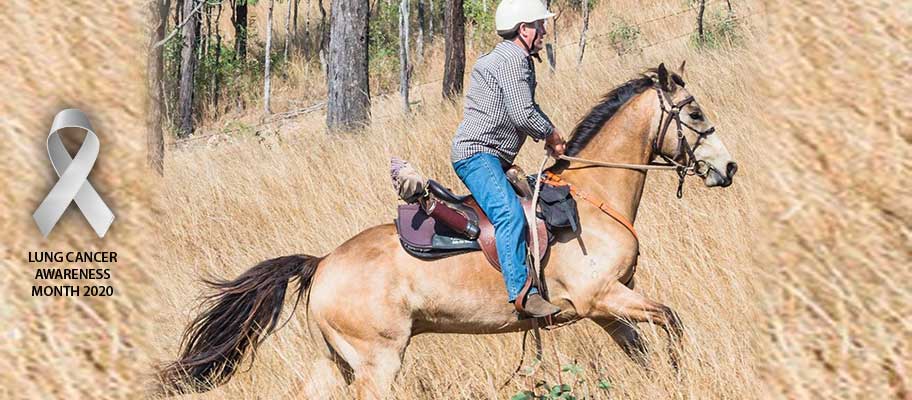
New lung cancer therapies bring hope to people like Fraser Stewart.
The 64-year-old father of two and retired diesel mechanic was diagnosed with Small Cell Lung Cancer in July 2019. Already he has endured rounds of chemotherapy, radiotherapy and immunotherapy. Now he hopes another new therapy will give him more time with his family and to enjoy life on his acreage outside Melbourne.
“I am still looking on the bright side,” Fraser says now. “I don’t know how long this treatment will give me and I am just really taking things week by week.
“But this is not the first time I have gone through cancer. I had melanoma about 15 years ago. I am living on the hope that I got through the melanoma. I have beaten the odds once and I hope to live past the odds again. The research is always improving, and different people have different outcomes.”
Fraser was “reasonably fit” when he was diagnosed for a second time but knew something was wrong when became short of breath and began coughing blood.
An initial CT scan was misinterpreted. “The scan guy missed a 10-millimetre tumour. But I knew something was wrong. It took a month or more to be diagnosed.”
Around 12,000 Australians are diagnosed with lung cancer every year and Small Cell Lung Cancer accounts for around 15% of cases.
This disease usually begins in the middle of the lungs and spreads more quickly than non-small cell lung cancer.
Lung cancer symptoms may include shortness of breath, voice changes including hoarseness, chest pain, coughing or spitting up blood, a new cough that does not go away or recurring bronchitis or pneumonia. Some patients notice enlarged fingertips, a loss of appetite, unexplained weight loss or tiredness.
Fraser says it’s impossible to know what has caused his cancer this time around.
“I was a smoker, and obviously through my work I was exposed to diesel fumes, and diesel oils and petroleums. I was also possibly exposed to asbestos. I have not lived the cleanest of lives, but I did give up smoking 27 years ago.”
For now, he is just living “week by week”. “I have got a lot to look forward to. I have got a little granddaughter Harriet, who is nearly four. And my daughter is having her first child due the day before my birthday on 29 November. My son and his wife are having their second child around Christmas. Also, I have not ridden my horse for nearly two years. That’s one of my ambitions – to have another ride.”
Fraser shared his experience in October 2020.
Lung Cancer Awareness Month: Brian’s Story
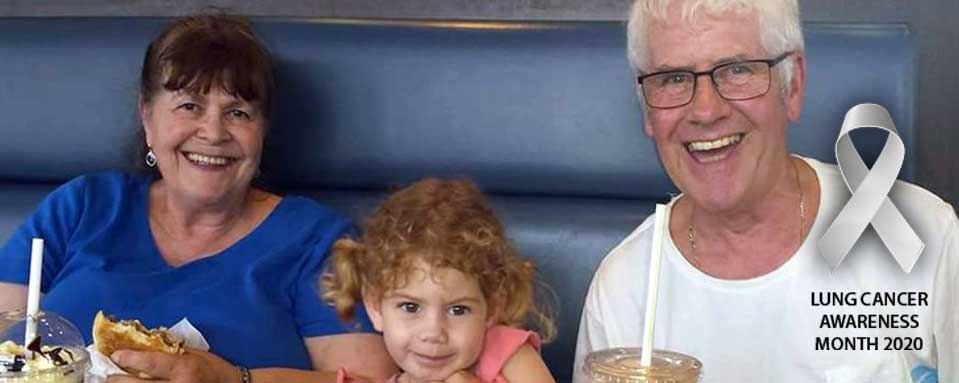
“As long as you are kicking, there is always something new coming out all the time … that gives me hope. ”
73 year-old Brian Flynn loves a beer, his family and the St Kilda Football Club. The former industrial cleaner was close to retirement when first diagnosed with lung cancer five years ago. He had been a heavy smoker as a younger man, and was originally diagnosed after doctors investigated the source of his chest pain.
After months of treatment, this father of four and grandfather of four was confident he’d beaten the disease, but a routine scan recently revealed his cancer – Small Cell Lung Cancer – was back.
“It was horrible,” he says now. “I thought I was in the clear. I had never heard of this type of cancer before I got it, so I read up about it. It’s a difficult one to eradicate.”
Around 12,000 Australians are diagnosed with lung cancer every year and Small Cell Lung Cancer accounts for around 15% of cases.
This disease usually begins in the middle of the lungs and spreads more quickly than non-small cell lung cancer.
Lung cancer symptoms may include shortness of breath, voice changes including hoarseness, chest pain, coughing or spitting up blood, a new cough that does not go away or recurring bronchitis or pneumonia. Some patients notice enlarged fingertips, a loss of appetite, unexplained weight loss or tiredness.
Brian is now undergoing treatment with a new therapy every three weeks. He believes new medicine and new options offer hope.
“As long as you are kicking, there is always something new coming out all the time,” says. “That give me hope.”
And while he is not sure what the future holds, he knows what he is looking forward to: a trip to Brisbane, where two of his sons and two grandchildren reside.
“I spend half my time back in Brisbane, and I want to get up there again,” Brian says. “They keep you going.
“I have got one son still at home and we have a couple of beers together, especially if the football is on. I also have my daughter here in Melbourne, and two grandkids.
“What do I miss? I miss going to the pub!
“I think it will be after Christmas before the borders get open. That’s what I am looking forward to.
“You have to fight … I am not ready to give up the ghost right now.”
*Brian shared his experience in October 2020.
